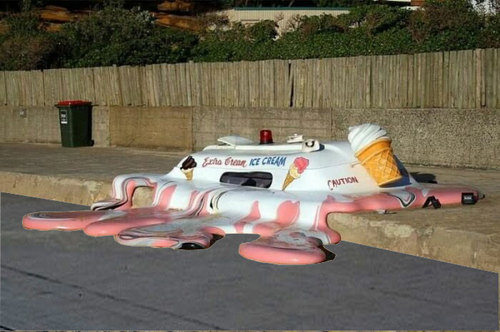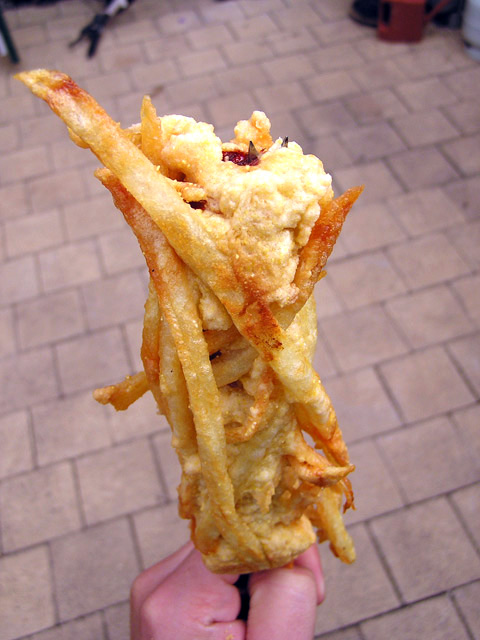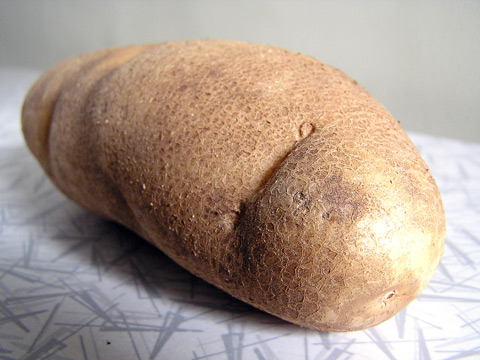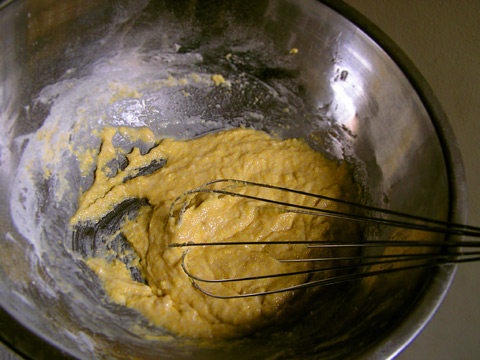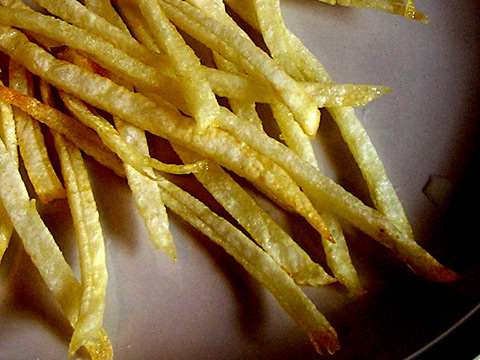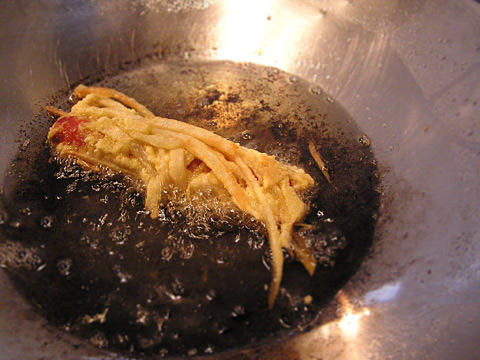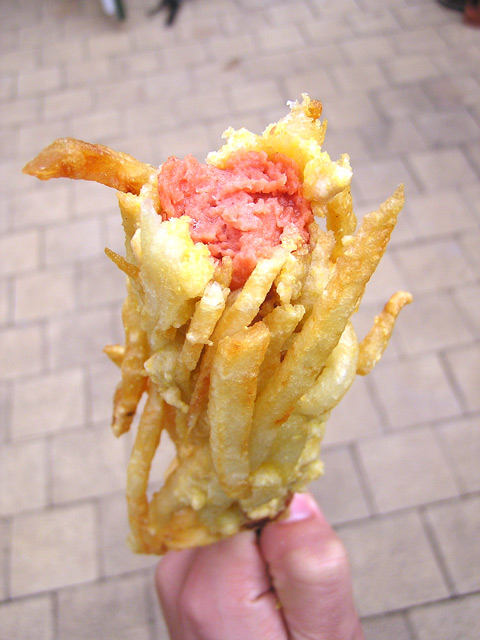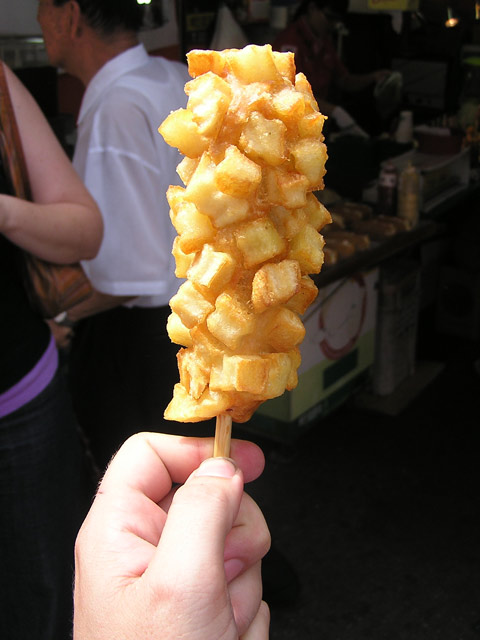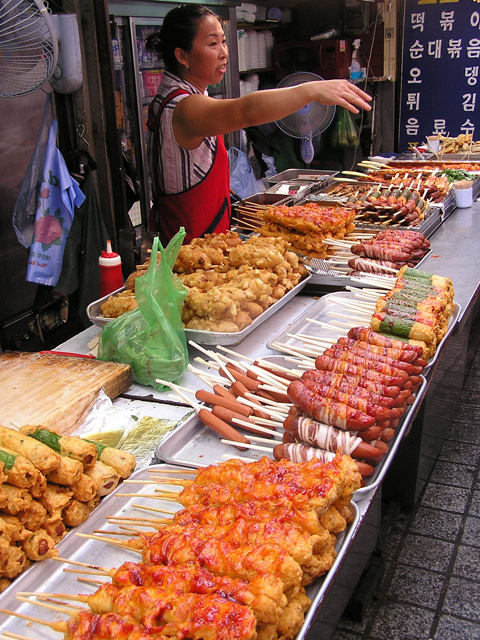Photo Credit: Wooster Collective
I worked in a food truck for a few months in 1996. The truck parked at automotive parts swap meets and out the front of the cow pavilion at the Royal Easter Show. I cooked hundreds of frozen hamburgers, industrial soy-beef patties defrosting on the grill for families with matching mullets in the real need of a Cortina alternator. The jam donuts, chips and battered hotdogs in the roiling deep fryer, which by the end of the day tasted indistinct from each other, downed by men who smelled sweet like bovine.
The boss was happy insofar as I wasn’t a junkie and nothing caught fire. They paid cash, daily. It wasn’t the worst of food industry jobs that I’ve been involved in. It wasn’t noble. Apparently any non-addict could do it.
Australia has hundreds of similar food trucks and mobile food businesses from Mr Whippy vans to the sausage sizzles in front of hardware retailers. At the moment, there are nine food vans parked in Melbourne’s CBD alone, as shown on the below map. As far as I can remember, they’re all icecream vendors and donut vans.
There is something deeply amusing about both Sydney and the suburban Melbourne councils considering the need for more food trucks when there is already a well developed ecosystem.
The problem is that it’s not the cool street food ecosystem.
The depressing secret behind street food culture is that it exists because there is nowhere else to eat. In Phnom Penh, a good deal of the street food exists because it is too expensive for the average worker to leave their job and go home for a cheaper meal. Despite the backpacker authenticity myth, the bulk of it is as nasty as it is cheap; good street food is so rare that it is almost a euphemism. In Los Angeles, food trucks, especially the semi-permanent Mexican loncheras, offer an oasis in the food desert for factory workers and locals. If anything, they’re stuff white people like because they’re beacons of actual food in a grove of Olive Gardens or whatever pretend food is served in roadside mass-market chain restaurants. In Kuala Lumpur, street vendors develop symbiotic relationships with a cafe, multiple vendors clinging parasitically to a single coffee shop. In all cases, food trucks and street vendors tend not to compete with existing businesses because there aren’t any other existing businesses nearby. All are the result of local conditions.
Generally that condition is poverty, followed by richer people lionising food that poor people eat.
Australia already has a unique street food culture but it is one that is only celebrated on rare occasions because the rich have no interest in replicating or sampling what poor Westerners eat. The footy frank (PDF). The aforementioned Mr Whippy and his alliterative pseudonyms. The election day sausage sizzle. Preserves and cake stands at church fetes. They’re all temporary but not “pop-up” in the baffling modern parlance. Pop-up is used as obsfucation for expensive or designed or from somewhere else, some place where the poor eat capital-A authentic meals.
The unpopular Australian street foods are also the precursor to building a culture of street food but that hasn’t happened because unlike LA or Phnom Penh in the urban centres in Australia there is no shortage of great, easily accessible meals. There isn’t a footy frank vendor on every corner because good food is straightforward to find. In the absence of Michelin stars, many restaurants are awarded imaginary hats by our food press. There’s not even a shortage of good portable food from upmarket pork belly sandwiches to cheap sushi. Beyond the occasional cone of soft serve or post-Queen Victoria Market donut, there isn’t much of a market for heartier food served streetside when you can get a markedly better meal nearby and somewhere to sit and eat it.
It’s certainly not to denigrate the new wave of Twitter-wielding Roy Choi wannabes around Australia: the food itself serves that purpose. Melbourne’s taco truck’s tacos are almost as good as those that you can get in a shopping mall food court. With any luck, the new trucks and popups might bewilder the rich long enough to lead to new restaurants. There is just no deeper culture to support it forever.
View Food Vans in Melbourne CBD in a larger map
